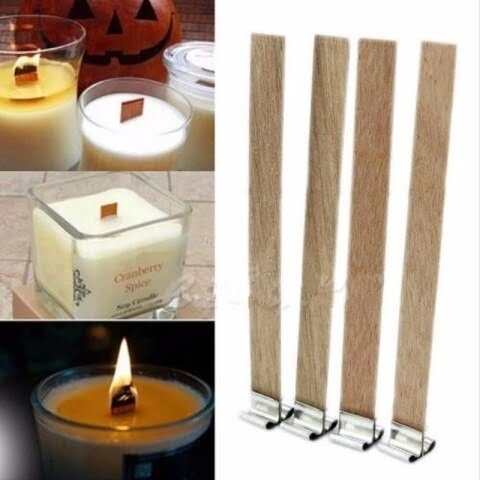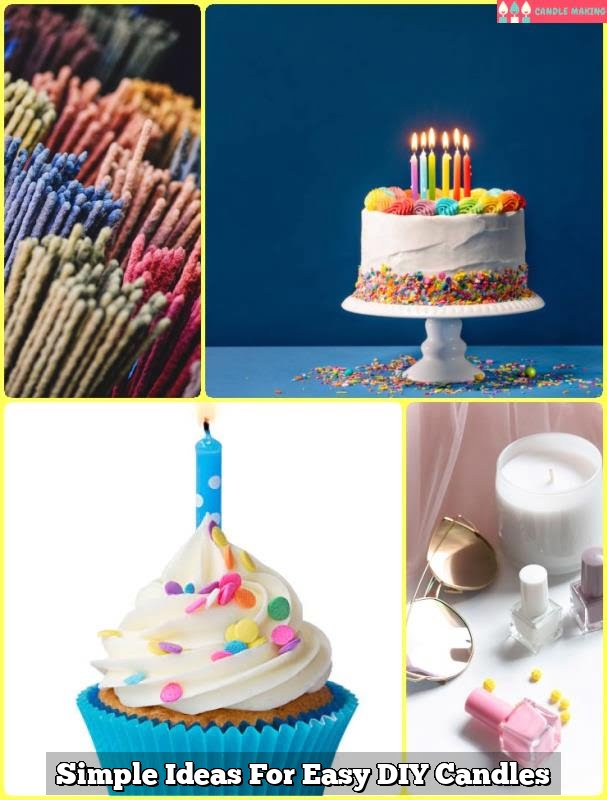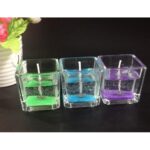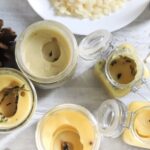Introduction
Candle making is a fun and creative craft activity. With a few simple materials like wax, wicks, and fragrances, you can make beautiful candles of all sizes and shapes. There are many types of wax for candle making and the one you choose will depend on the type of candle you would like to create. The most common waxes used for candle making are beeswax, paraffin, soy wax, gel wax, bayberry wax, and palm wax. Each type has its own benefits depending on how you want your finished candles to be like in terms of shape, scent, burning time, etc.
When it comes to scents and decorations, the possibilities are endless. Scents such as essential oils and fragrances can be added to add beauty and charm to your candles. Colorants in powder or liquid form can also be used to give your candles an interesting look that will draw attention right away. Natural decorations such as dried flowers or herbs can also add a special touch to your creations. Finally, molds can come in handy if you want to create bigger pieces that require more intricate shapes or sizes which would otherwise be difficult by hand with other materials.
Preparing to Make a Candle
Choosing Wax : When it comes to wax, you have a lot of choices. Each type of wax has its own unique characteristics. Paraffin wax is the most common and readily available type of candle wax, and is good for beginners who are just starting out with candle making. Natural vegetable-based waxes such as beeswax or soy wax may be more expensive but provide a higher quality final product than paraffin.
Equipment: You can find all the necessary tools for candle making in hobby and craft stores. Getting the right equipment can make your project easier and help you achieve the desired results. You’ll need something to melt the wax in, like an old pot, a double boiler set up, or a small electric pot known as a melting pot. Other items you’ll need include candle wicks, wick holders (pins or glue guns are ideal), thermometers to measure temperature and molds that match the shape and size of your intended candles.
Preparation Tips : Before getting started on your candle making project, gather everything you need so it’s all in one place ready to go. Take safety precaution by preparing your work-space ahead of time – ensure that there’s no open flames nearby, wear gloves if necessary to protect yourself from hot liquid wax and remove any valuables or flammable materials from the area.
Safety Precautions: Candle making can create fire hazards due to their combustible ingredients – especially when inadequate safety precautions have not been taken. Do not leave hot liquefied wax unattended as this poses significant risks for causing fires; always keep an eye on it while it melts and use caution when handling even after it has cooled down. Utilize emergency preparedness devices like fire extinguishers nearby just in case something unexpected happens while crafting your candles!
Creative Candle Making Ideas
Simple candle making doesn’t have to be boring – there are plenty of ideas that can add a bit of spark and creativity for any special occasion. Whether you’re making your own candles for a romantic dinner or as decorations for centerpieces, you can customize each one with simple techniques and basic supplies.
For classic style candles, consider sticking to white or ivory beeswax and plain wick. The natural golden hue of the wax will add a warm feeling while the simplicity of the style makes it easy to blend in with all kinds of home decor. To spice things up, try adding embellishments like dried flowers or herbs and using various sized molds to create unique shapes like pillars and tapers.
If you’re looking for something more modern and creative, start experimenting with colors. You may need to use specially formulated dyes and waxes to maintain the consistency, but after a few tries you’ll find that pouring layers of different waxes into complementary colors creates stunning earthenware effects! Incorporating scents is also fun – just make sure you use essential oils rather than synthetic fragrances as candles are often left burning unattended. Finally, playing around with textures like swirls, marbleizing, and glitter sprinkles can take your candle creations from bland to beautiful in no time!
Alternatives to Wax Candles
Gel Candles: Gel candles utilize a jelly-like substance made of both mineral and vegetable oils. These candles may be constructed using molds and often contain small objects embedded in the wax, such as flowers or seashells. They tend to produce a strong scent and last longer than traditional wax candles.
Soy Candles: Soy candles are made from a natural wax derived from soybean oil. They burn cleanly, with no soot or smoke, and come in a wide variety of scents and colors. They provide a long, steady burn time and are an eco-friendly option for those looking for sustainable solutions.
Beeswax Candles: Beeswax is an all-natural wax made by honeybees that has been used for centuries to make candles. Beeswax candles emit negative ions as they burn, which can help purify the air of dust mites, pollen, pet dander, mold spores and other allergens. These candles retain their shape better than traditional wax ones while producing no soot or smoke when burned correctly.
Bamboo Candles: Bamboo candles offer a unique twist on candle making using bamboo sticks instead of wicks set in jars filled with either beeswax or paraffin waxes. The bamboo provides an interesting design element as well as providing a muted glow when burning the candle.
Other Sustainable Solutions: Other sustainable solutions for candle making include containerless (floating) candles in water, hand-dipped taper candles made from 100% beeswax or soy waxes, coconut shell containers filled with scented oil wool wicks soaked in essential oil blends, cotton paper wrapped around stones with scented oils inside them, terracotta disk/clay ringed surrounded by natural fiber cords soaked in essential oils whereby allowing the penetrating scent to fill the room through evaporation.
Steps to Make a Candle
Making a candle is a fun, simple project that can be done in countless creative ways. The basic process involves melting your wax, pouring it into a container, and finishing with the addition of a wick. Following these simple steps will give you an end product that is both beautiful and useable!
1. Collect all necessary supplies. Begin by gathering everything you’ll need for your candle-making project: wax (most often in block or bead form), wicking material (often found in spools or pre-cut wicks), scissors, containers such as jars or tins, pour pot, thermometer (candy or deep fry type works best), paper towels and optional dye chips/fragrance oil.
2. Prepare containers and wicks. Once you have all your items together, decide on the containers you’d like to use for your candles. Then check to make sure the wicking fits snugly into the container before dipping each end in melted wax to help secure it in place.
3. Melt wax using pour pot and thermometer following safety guidelines for using hot wax and any flammable materials when melting melted down for practice projects). Make sure to keep temperature between 145-160 degrees F (63-71 C). Adding pieces of old candles or crayons may also be used to create interesting effects when making candles.
4. Add color chips or fragrance oil if desired during melt process in small increments. Once desired coloring/scent has been achieved remove from heat source and pour into prepared molds/containers taking care not overflow any given area (while avoiding air bubbles where possible). For layers melt separately before combining together in single container once cooled slightly; gently moving around until evenly distributed preventing air pockets being created by too much stirring at this point of cooling process as well as sticking while cold completely trapping pockets of air within design/creation itself.).
5. Allow time to cool completely before pulling up hanging string cutting off excess length if any should exist; doing so very carefully taking caution not break front surface area when going through this step important securing longevity quality end product made inside home setting itself).
6. Enjoy finished product! After taking some time allowing complete cool down take enjoy your handmade piece art tired sitting alone void dedication put creating such gorgeous item something own purposes .
Delivering Your Finished Product
Delivering your finished candle product is a great way to show off your craftsmanship and skill. Good presentation and packaging can help customers appreciate the value of your candles, while creative delivery ideas offer unique ways to share your work.
When packing candles for transportation, make sure that they don’t rub against each other or move around too much. Wrapping the candles in tissue paper or soft cotton fabric helps protect them from damage during transport. You can also add small pieces of bubble wrap inside the box as well to keep them safe from breakage.
For eye-catching gift presentation, place the candle in an attractive decorative holder or box with padding on the bottom. Tie ribbon around it and include a printed sample card with a description of the candle’s scent and burning instructions. You can also make themed packages featuring different candles depending on the occasion ” “stressed out survival kits” for stress relief during busy seasons, “romantic night-in boxes” for cosy evenings at home, or mini aromatherapy kits are all great ideas for memorable gifts.
During special occasions or holidays, you could even arrange group deliveries for orders such as corporate gifts ” including customised prints or promotional material about your brand along with each package will help you spread word-of-mouth! Personal touches such as handwritten notes can also be included to impress customers further. Ultimately, whatever delivery option you choose should take into account customer satisfaction and emphasise the quality of your products confidently ” which likely means no flimsy tissues or awkward brown boxes!
Candle Making Business Examples
One example of a candle making business is a local small business that specializes in creating handmade scented candles. This business usually starts by purchasing high-quality wax and wick kits from suppliers. Then, the makers mix different types of fragrance oil and dye to create custom scents for their clients’ needs. In addition, they may hand-pour each candle into colorful containers, or use molds to shape them into different shapes and sizes. Finally, they can add details such as labels and decorations to give the candles a unique finish.
This type of candle making business may also offer additional services such as customizing orders for bridal showers and baby showers, working with clients to create specific colors or scents for weddings and special events, providing classes on how to make candles, selling tools and supplies needed to make candles at home, or even selling finished candles at craft fairs. Customers have the freedom either design their own custom candles or purchase quality crafted ones from the shop owner’s creations. Additionally customers may be given the opportunity to get creative through contests like most fragrant scent or prettiest design in order to increase sales while giving users something extra fun to do along with their purchases! The possibilities are endless!
Conclusion
Benefits of Making Candles at Home: There are many advantages to making your own candles at home. The biggest advantage is the ability to customize your candles to match any decor or setting. You can dye, scent, and add decorations or embeds in the candles to create the perfect look. You’ll also save money by making your own candles, as store bought candles can be expensive.
Pros and Cons of Different Wax Types: Different types of wax have varying levels of softness and melt points, so they must be taken into consideration when selecting the appropriate wax for your project. Beeswax is a natural wax that is great for hot weather as it has a slightly higher melting point than other types. Soy wax is eco-friendly and provides excellent adhesions for wicks but can get softer in warm temperatures. Paraffin wax has color retention and availability but does contain toxins.
A Final Word of Encouragement: Making candles at home may seem intimidating at first, but with patience and dedication you will master this art form in no time! Candle making is an enjoyable way to spend an afternoon while creating something beautiful that you can appreciate forever. Gather all the necessary tools, including molds, containers, wicks, scents and dyes then dive into exploring this unique creative outlet!

Welcome to my candle making blog! In this blog, I will be sharing my tips and tricks for making candles. I will also be sharing some of my favorite recipes.





